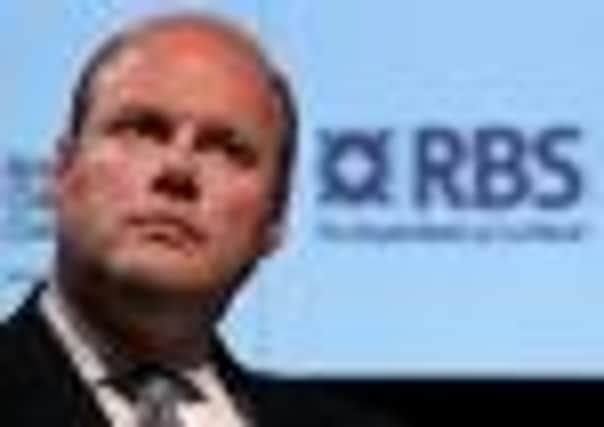RBS plans to float branches on stock market


The bank disclosed the move alongside another huge annual loss and a raft of plans including the partial-float of its Citizens bank in the US and further shrinkage of the investment banking operations, mainly in London and overseas.
RBS is under orders to sell 316 branches in England and Wales as a condition for receiving state aid but it was left owning them after Spanish bank Santander pulled out of a £1.4 billion deal last October.
Advertisement
Hide AdAdvertisement
Hide AdYesterday it said it would ask the European Commission for an extension to the end-2013 deadline to find another buyer.
Stephen Hester, the bank’s chief executive, said a flotation using the mothballed Williams & Glyn’s (W&G) brand was now the “baseline” plan.
“We have to recognise that there are not a lot of buyers for UK banks right now,” he said. “If someone wants to buy it [the W&G business] then terrific, but buyers are thin on the ground.”
The plans for the branches came as RBS said it would probably sell about 25 per cent of its US Citizens business through a New York flotation about two years from now.
RBS yesterday posted a pre-tax loss of £5.16bn, largely because of compensation and fines connected with mis-selling of products but also a result of a credit adjustment on its debt.
It earmarked a further £450m for the payment protection insurance scandal, taking the total provision to £2.2bn. It has also set aside £700m to compensate small businesses mis-sold complex interest rate hedging products, against an initial provision of £50m.
The bank revealed an operating profit up from £1.8bn to £3.5bn for 2012 in what Hester dubbed a “chastening year” but one in which the bank had made progress in its core activities and in cleaning up the balance sheet.
The City viewed the underlying profits as further evidence that the eventual repayment of a dividend at RBS is gradually approaching.
Advertisement
Hide AdAdvertisement
Hide Ad“The light at the end of the tunnel is coming closer,” Hester said. “Our job is to deliver a company that is doing its job well and that other investors will want to invest in.”
He said the continuing clean-up of RBS should be much more evident into 2014, the completion of the three-to-five year timeframe Fred Goodwin’s successor has said the turnaround would take.
That has involved a multi-billion pound sale or pruning of businesses to radically cut the bank’s size, including its investment banking activities, aviation leasing arm, metals and energy trading, Asian retail assets and asset management.
Hester said RBS would further cut the “scale and scope” of its investment bank to focus on core household and small business customers.
RBS accounted for 36 per cent of all SME lending, compared with overall customer market share of 24 per cent.
In a letter to shareholders, chairman Sir Philip Hampton accepted that the bank’s control systems had failed. “Some employees put their own interests well ahead of customers’ and shareholders’, ignoring the difference between right and wrong,” he said. “Your board expects the highest standards of personal and professional conduct. We know that our shareholders, our customers and others will hold us to high standards. It is a matter of great regret that the conduct of a very small number of our people fell so far short of what we expect.”